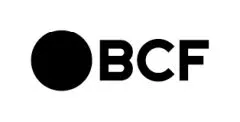In 2019, the U.S. Congress passed a law that would modernize the U.S. Trademark Act. Most changes brought about by this law have now come into effect.
How Will This Affect Your Business?
Effective December 1, 2021, the deadlines to respond to examination reports issued following the filing of applications for registration have been reduced from six to three months, significantly reducing the length of the trademark examination process, but also the deadline to respond to any report. Indeed, as there is no possibility of extending this time limit in the United States, there will be a need to be vigilant and to ensure that any examination report issued is acted upon promptly.
The impact of such a change will likely have a significant effect on Canadian trademark owners who wish to protect their mark in the United States.
There are four registration bases generally available to obtain a U.S. trademark registration:
- hold a corresponding Canadian or an international registration;
- hold a corresponding pending Canadian application, which will however require the eventual filing of a copy of the Canadian registration once issued;
- intend to use the mark in the United States, which will require that a declaration of use be eventually filed along with specimens of use; or
- use the mark in the United States with supporting specimens of use.
Applications for registration in the United States are, in most cases, based on the corresponding Canadian registration issued or to be issued. Given that the time required to obtain a trademark registration in Canada exceeds three years, it is reasonable to expect that the U.S. examination, already faster than the Canadian one, will be completed well before the Canadian registration has been obtained. In such case, it is possible to extend the time to provide a copy of the Canadian registration, but each extension will lead to additional costs. The same would be true for extending the time to provide a declaration and specimens of use. It is therefore important for Canadian trademark owners to review their registration strategy in the United States to take into account the different options and the impacts of each.
Properly Plan Your Trademark Protection Strategy in the United States
In such circumstances, it is essential to rethink your trademark protection strategy in the United States, especially in light of the corresponding Canadian filing date, , but also in light of the expected date of commercialization of the products and services in the United States. Obtaining an international registration may also be a strategic choice in view of a designation of the United States within same. Indeed, this international registration, which is usually issued very quickly, can be an interesting registration basis in the United States, permitting to avoid the lengthy delay associated with the issuance of the corresponding Canadian certificate or the filing of a declaration and specimens of use in the United States.
For more information, feel free to contact our trademark team, who can help you develop the most efficient and advantageous trademark protection strategy in terms of deadlines and costs in the United States.
The content of this article is intended to provide a general guide to the subject matter. Specialist advice should be sought about your specific circumstances.



